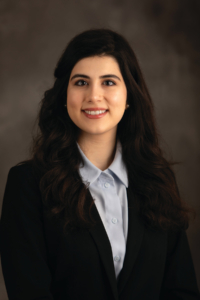Behind The Scenes: The Court of Appeals through the eyes of a former judicial law clerk
March 26, 2025
Illustration: Iftikhar Alam/Dreamstime
By Rafaella P. Safarian
The Arizona Court of Appeals (“COA”) is a well-oiled machine. While the judges are the face of the COA, their appellate decisions are a collective effort of judges, judicial assistants, staff attorneys, staff in the Clerk’s Office, and judicial law clerks.
The COA has two divisions. Division One, based in Phoenix, decides appeals from Apache, Coconino, La Paz, Navajo, Maricopa, Mohave, Yavapai, and Yuma counties. Division Two, based in Tucson, decides appeals from Pima, Pinal, Cochise, Santa Cruz, Greenlee, Graham, and Gila counties. Each division has a chief and vice chief judge. I had the privilege of clerking for Vice Chief Judge Randall M. Howe in Phoenix for two years after graduating from law school.
Appeals begin at the Clerk’s Office, which handles case management, including receiving the appellate briefs and the record on appeal (the superior court filings). The Clerk of Court then assigns each case to a panel of three judges, as well as schedules the conference date (i.e., the day when the judges will discuss the case) and oral arguments, which, when scheduled, provide parties with the opportunity to present their arguments before the judges.

Rafaella P. Safarian
Each panel has a presiding judge, who sits in the middle of the bench during oral argument. As presiding judge, Judge Howe allocated authorship of the decisions among the panel. Then, he assigned his cases to my co-clerk and me.
Upon receiving my assignment, I reviewed the record on appeal, briefs, and law. I discussed the case with Judge Howe either one-on-one or during weekly chambers meetings. Based on our discussions, I drafted a memorandum decision two weeks before the conference date, doing my best to conform to his writing style. After his review and after I completed any revisions, I submitted the draft to the panel one week before the conference. By the day of the conference, the judges had made suggested redlined edits and comments on the draft for discussion.
During conference, I presented Judge Howe’s decision to the panel, and the judges discussed whether they agreed or disagreed based on the law and the record. Some decisions were not rendered on conference day. Sometimes, the panel reconvened after further analysis or supplemental briefing.
If oral argument was scheduled, I attended to take notes (or to serve as bailiff if it was our chambers’ turn). Sometimes, oral argument clarified the judges’ questions or even changed the panel’s decision. I learned that the parties should shift the argument’s focus or length according to the panel’s line of questioning, especially if the panel continues questioning about a particular portion of the briefing, or if the panel is largely quiet on the bench. I also attended any post-argument conferences. After making any necessary revisions to the draft decision, Judge Howe’s judicial assistant and I would cite check and record check the draft. The judicial assistant then sent the draft to the panel for final approval. If the panel determined that the decision should be an opinion, all judges from both COA divisions had the chance to approve of and comment on the opinion itself before publication. Subsequently, the Clerk’s Office published the draft.
My experience at the COA was invaluable. Not only did I develop research and writing skills, but I also developed relationships with the judges, fellow law clerks, and staff. Now that I have entered private practice, Judge Howe remains a mentor and inspiration to me. As I proceed further along in my legal career, I aspire to become a mentor like him someday.
Back to News & Events